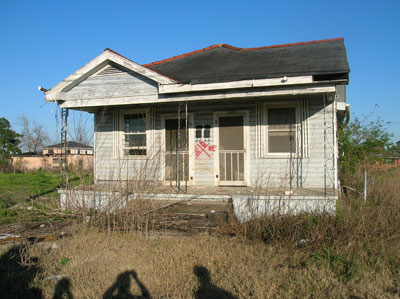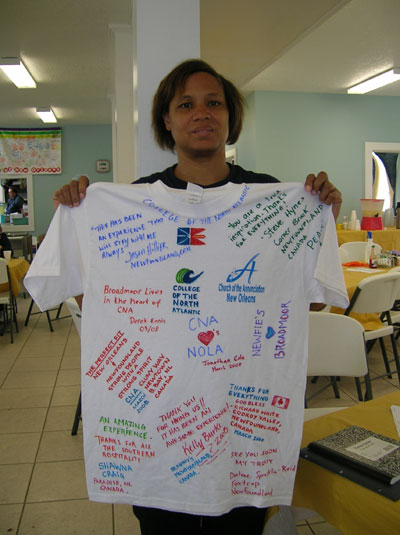
A vacant house in the Lower 9th Ward. The water level was over the top of the roof of this house and practically all houses in the Lower 9th.

Jean, a former resident of the lower 9th Ward who stayed behind and survived Katrina, holds an Annunciation Mission T-shirt signed by all members of the CNA delegation and left for the workers and volunteers there. Jean now works at the mission – a ministry of the Free Church of the Annunciation, where they provide lodging and guide people towards volunteer and mission opportunities in the City of New Orleans.